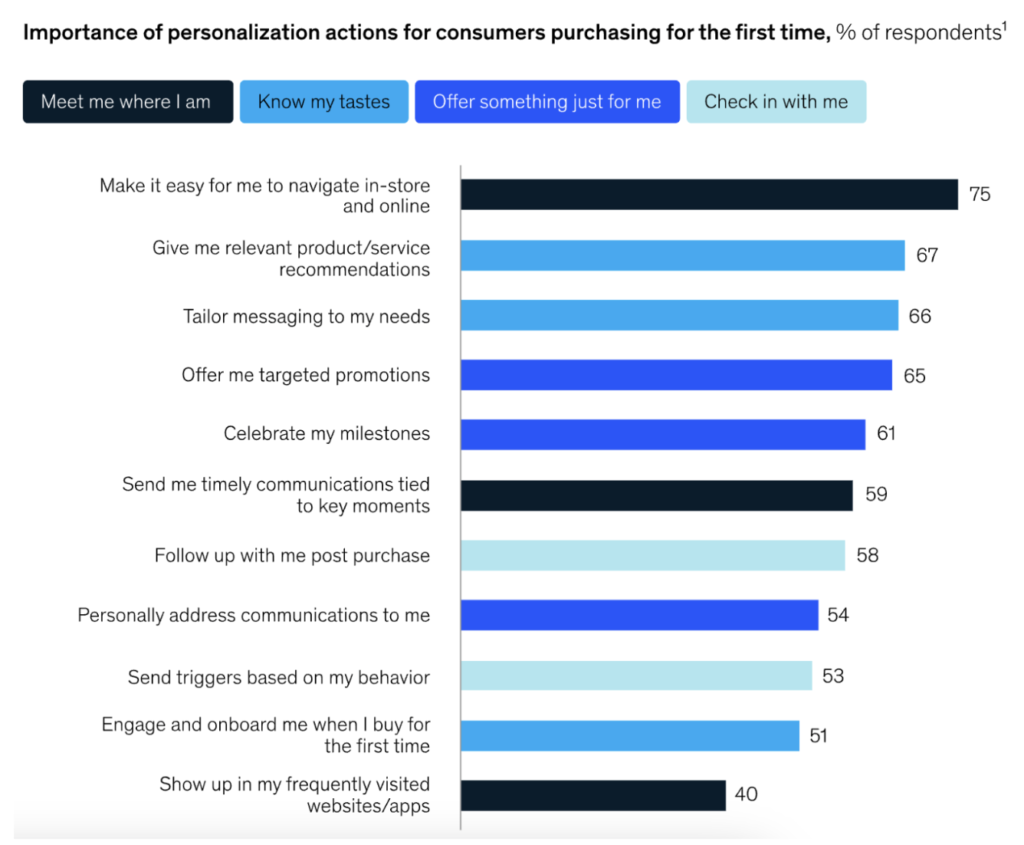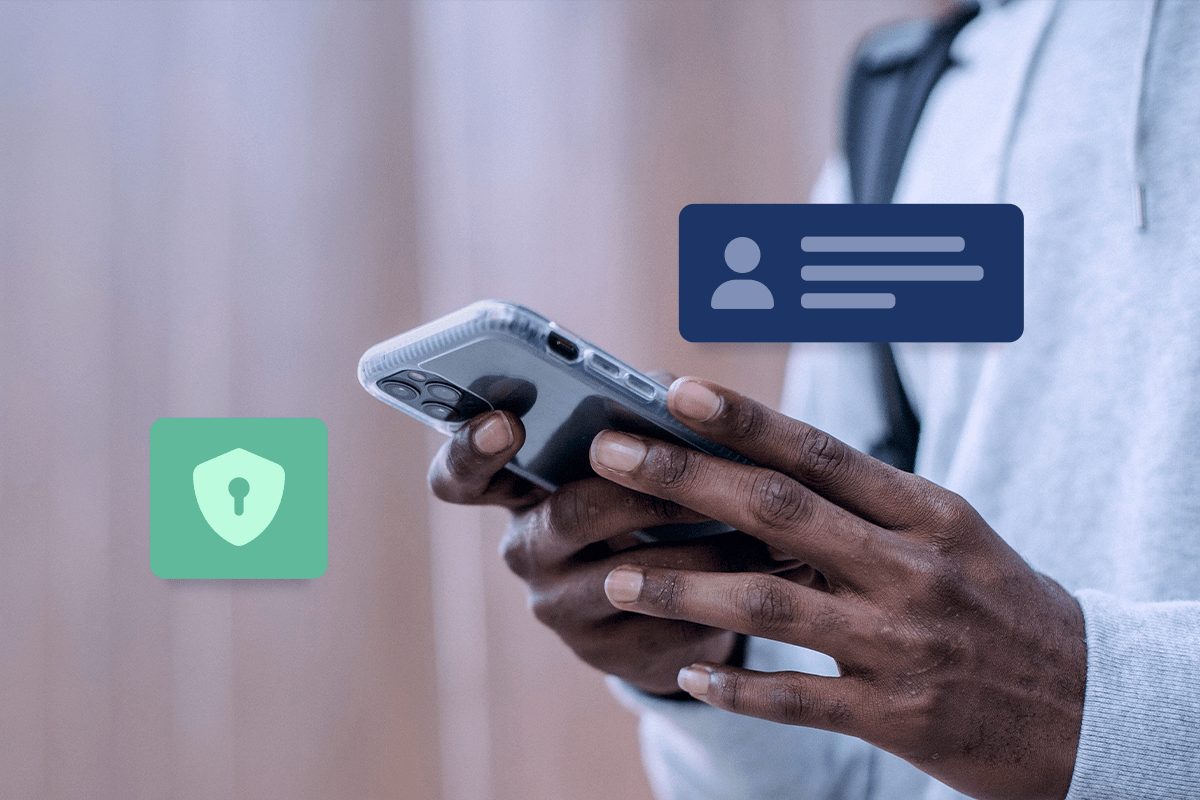Consumers’ default expectations include personalized service when interacting with brands online. But they’re also increasingly concerned about data privacy.
When it seems like every company is collecting data on them, consumers start to get worried.
So how do you deliver personalized customer service in the age of data privacy? It’s a delicate balance that depends on honesty, transparency, and thoughtfulness.
How important is personalization?
In a word: very. Personalization is table stakes these days, and customers make decisions based on how customized the shopping experience is to their preferences.
According to Salesforce’s State of the Connected Customer report, 73% of surveyed consumers expect companies to understand their unique needs and expectations. And even though privacy concerns have grown, customers’ preferences for personalization continue to grow. That number increased by 11% in the last two years. It makes sense—customer expectations have jumped since the pandemic.
Plus, more than half of consumers (54%) expect offers to always be personalized.
That’s not all. According to a McKinsey report, 76% of customers get frustrated when personalization doesn’t happen.
How to use personalization to influence buying behavior.
Personalization also influences purchasing decisions. Over three-quarters of consumers (76%) said that receiving personalized communications was a key factor in prompting their consideration of a brand, and 78% said such content made them more likely to repurchase.
McKinsey asked customers how important different types of personalization were to their first-time purchasing decisions. Here’s what they said.

As seen in the above chart, the top five most important ways to personalize an interaction are
- Navigating in-store and online: Customers want to get to what they like quickly, and they don’t want to scroll through too many options to find it.
- Product and service recommendations: Much like a salesperson can suggest items based on the customer in front of them, your site should use the information you have to pull out items or services they might like.
- Tailoring messaging: “Hi [First Name]!” is a great start, but how else can you talk to your customers like you know them? Can you segment based on life stage? Preferences? If you have the information, use it.
- Sending targeted promotions: Is your customer overdue for a service? Send them a coupon to encourage another visit.
- Celebrating customer milestones: Celebrate milestones in your customer’s life, like birthdays, graduations, or their first home purchase—but don’t stop there. Celebrate their 100th purchase with you, their year anniversary, or the first time they buy from you. Make it personal so they don’t feel like a number.
“Players who are leaders in personalization achieve outcomes by tailoring offerings and outreach to the right individual at the right moment with the right experiences,” according to a McKinsey report.
The problem is when you compare these expectations with an increasing focus on information privacy. When it comes down to it, consumers know you have vast amounts of data on them already, so they want you to demonstrate that you know them on a personal level. They expect you to recreate in-person, intimate experiences at scale.
Finding the balance between personalization and privacy.
Increased privacy concerns have made personalization a much more difficult task in 2023. Not only are there more laws and regulations around data collection, but customers are much warier about information-gathering tactics than they used to be.
Here are some best practices for gathering customer information in a privacy-centric way.
- Always get permission from customers before gathering information. Data privacy laws have become more stringent, and third-party cookie bans have made collecting information more difficult. That means you have to get permission from customers, and eventually, it will be harder to track them at all.
- Start asking questions. As data tracking becomes more difficult, you’ll have to start getting that information directly from your customers. This means asking more questions in customer service and paying more attention to behaviors instead of demographics.
- Collect only what you need: Salesforce reports that 74% of consumers say companies collect more personal information than they need. It should go without saying, but don’t ask for things like their pet names when you’re booking a restaurant reservation. Customers might think you’re stealing their information for nefarious purposes (but we know you’re just being thorough).
- Explain why you’re asking for that information: According to Salesforce, 79% of customers say they’d more likely trust a company with their information if the company clearly explained its use. Be transparent about how you’re using the data, and customers are much more likely to give it to you.
How does AI factor into the privacy conversation?
Customer trust is hard won these days, so it’s worth paying attention to how you present the use of AI in customer service.
So how do you use AI in customer service without losing customer trust?
Once again, transparency is the answer. 60% of customers would better trust AI if they had more control over how it’s used.
Here’s what that looks like when you’re using AI-enhanced chatbots in customer service:
- Have chatbots introduce themselves in the conversation. Customers should always know when they’re talking to a bot and when they’re talking to a human. No one benefits when you try to “surprise” customers—no matter how amazing the bot.
- Provide chatbot guidance upfront: Have your chatbot explain what it can do and provide some quick directions. For example, explain that the chatbot can help answer simple questions or gather information, but more complex issues will require a human.
- Give customers the option to connect directly with a human. Show customers, you respect them by giving them the option to chat with a human right away. Or if there’s no one available, let them know when a customer service agent can get back to them.
Win customer trust with honesty and great customer service.
If you take away one thing from this piece, it should be that customers will trust good service. Don’t collect endless data to sell, use for predatory practices, or just let it sit in a database waiting to be hacked. When you show customers you know who they are—and use it to their advantage—they’ll become customers for life.



